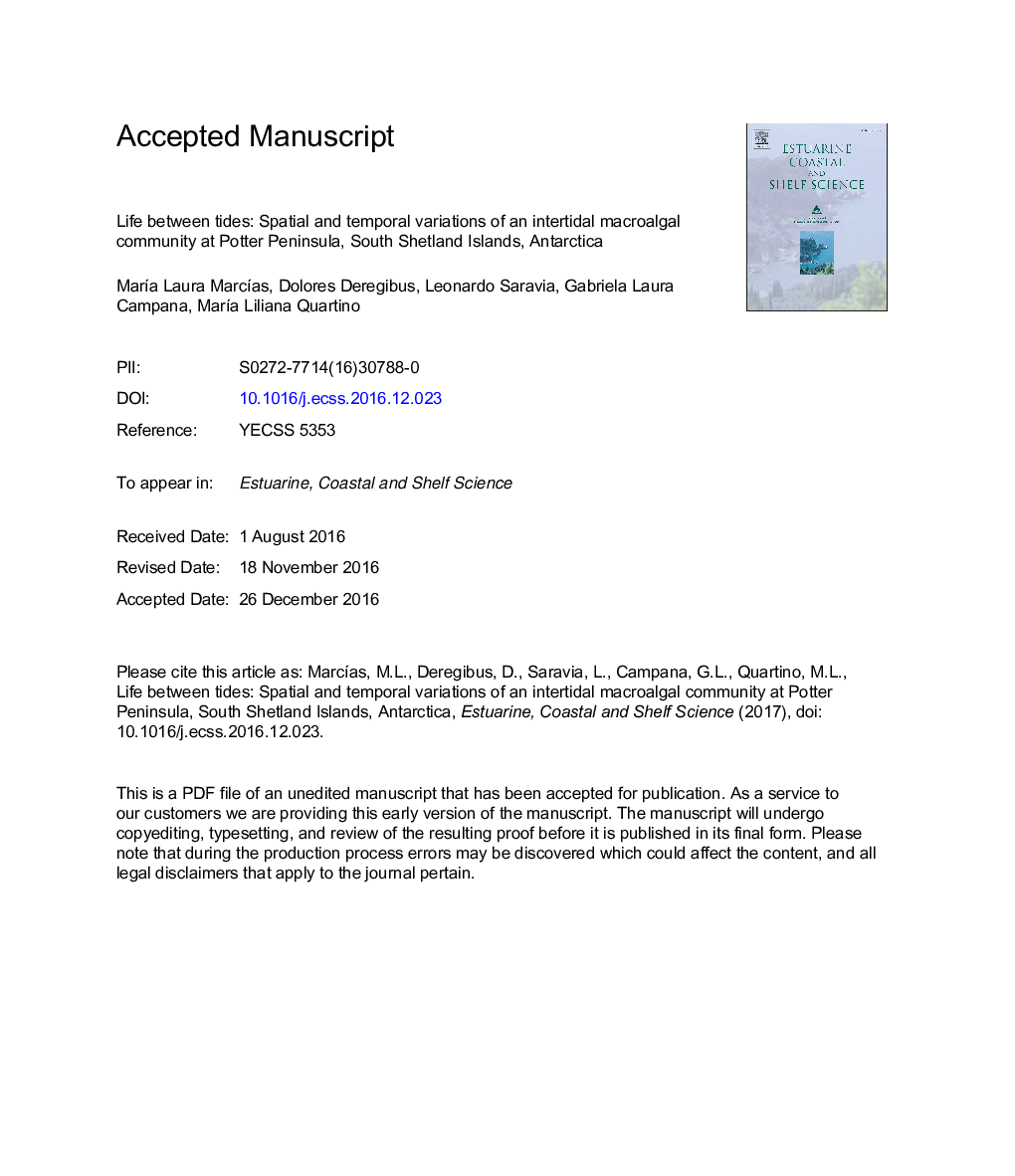| کد مقاله | کد نشریه | سال انتشار | مقاله انگلیسی | نسخه تمام متن |
|---|---|---|---|---|
| 5765260 | 1626615 | 2017 | 50 صفحه PDF | دانلود رایگان |
عنوان انگلیسی مقاله ISI
Life between tides: Spatial and temporal variations of an intertidal macroalgal community at Potter Peninsula, South Shetland Islands, Antarctica
ترجمه فارسی عنوان
زندگی بین جزر و مد: تغییرات فضایی و زمانی از یک جامعه بزرگ چمنزار در ناحیه پاتر، جزایر شتلند جنوبی، قطب جنوب
دانلود مقاله + سفارش ترجمه
دانلود مقاله ISI انگلیسی
رایگان برای ایرانیان
کلمات کلیدی
بنتوس، جلبک دریایی، زون زیست محیطی، جوامع آبزی ساختار جامعه، جزیره 25 د مایو / جزیره شاه جورج،
موضوعات مرتبط
مهندسی و علوم پایه
علوم زمین و سیارات
زمین شناسی
چکیده انگلیسی
Intertidal zones are one of the most studied habitats in the world. However, in Antarctica, further studies are needed for a more complete understanding of these systems. When conspicuous Antarctic intertidal communities occur, macroalgae are a key component. Given that intertidal communities have a fast response to variations in environmental conditions and could reflect climate fluctuations, we conducted a non-destructive study with photographic transects in an intertidal zone at Potter Peninsula, Isla 25 de Mayo/King George Island, over four years and during five months of the warm season. We tested the general hypothesis that macroalgal intertidal communities are mainly structured by the vertical stress gradient and that changes in temperature between seasons and between years have a great influence in the macroalgal community structure. Spatial, seasonal and inter-annual variations were studied using GLM, quantile regression and NMDS ordinations. The vertical stress gradient was the main factor that explained macroalgal cover. The Low and the Middle level shared similarities, but the latter was more variable. The High level had the lowest cover, richness and diversity. The dominant species here was the endemic red alga Pyropia endiviifolia, which is strongly adapted to extreme conditions. At the Middle level, there was a significant increase in macroalgal cover during spring months, and it stabilized in summer. Inter-annual variations showed that there is a strong variation in the total macroalgal cover and community structure over the studied years. Environmental conditions have a significant effect in shaping the studied intertidal community, which is very sensitive to climate oscillations. An increase in temperature produced a decrease of annual ice foot cover, number of snow days and - as a result - an increase in macroalgal cover. In a global climate-change scenario, a shift in species composition could also occur. Species with wide physiological tolerance that grow in warmer conditions, like Palmaria decipiens, could benefit, while other species will be discriminated. More detailed studies are necessary to predict future changes in Antarctic intertidal communities.
ناشر
Database: Elsevier - ScienceDirect (ساینس دایرکت)
Journal: Estuarine, Coastal and Shelf Science - Volume 187, 5 March 2017, Pages 193-203
Journal: Estuarine, Coastal and Shelf Science - Volume 187, 5 March 2017, Pages 193-203
نویسندگان
MarÃa Laura MarcÃas, Dolores Deregibus, Leonardo Ariel Saravia, Gabriela Laura Campana, MarÃa Liliana Quartino,
